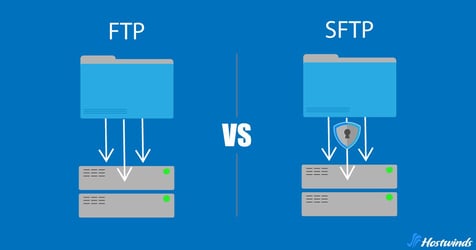Hostwinds Blog
Search results for:
Page 10 of the Latest Blog Posts

by: Hostwinds Team / October 9, 2023
When it comes to transferring files between your computer and a remote server, you may have come across two popular protocols: FTP and SFTP. While both of these protocols serve the same purpose - file transfer, they operate differently in terms of security and functionality....

by: Hostwinds Team / October 4, 2023
If you're new to the world of web hosting or exploring ways to start your own hosting venture, reseller hosting is a concept worth exploring. In this guide, we'll run through the basics of reseller hosting, uncovering what it is, why it's a valuable choice, how it operates,...

by: Hostwinds Team / September 26, 2023
In the world of web hosting and ensuring high availability of websites and applications, there's a crucial technology at play: DNS load balancing. If you're unfamiliar with this term, fear not – this article will break down the concept, explain how it works, the different...

by: Hostwinds Team / September 20, 2023
In the world of web hosting and data management, safeguarding your data is a top priority. Three common tools for this purpose are backups, snapshots, and replication. In this guide, we'll explore the differences between these data management approaches, their advantages and...

by: Hostwinds Team / September 15, 2023
Virtual Private Networks (VPNs) have risen to prominence as indispensable tools in safeguarding our digital lives. As we navigate the intricate web of the internet, the need to protect our personal information, shield our online activities from prying eyes, and access...

by: Hostwinds Team / September 8, 2023
With all the major advancements in technology and recent world events, eCommerce has become an important, almost necessary, model for businesses to thrive. Setting up an online store can be a lucrative venture and is relatively easy to set up once you have the basic...

by: Hostwinds Team / September 1, 2023
Among the various web hosting plans to choose from, shared hosting emerges as a popular choice, especially among those who are new to the concept of website hosting. It's offered as an affordable option that in many ways can compete with its more venerable siblings, VPS and...

by: Hostwinds Team / August 25, 2023
Imagine your domain as a canvas that holds the promise of a masterpiece. Yet, as you formulate your vision, the domain sits idle, waiting for its time in the spotlight. This is where domain parking comes into play. In this guide, we unravel the mysteries of domain parking,...
